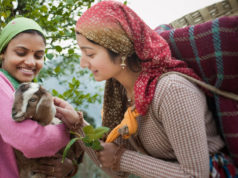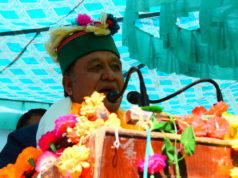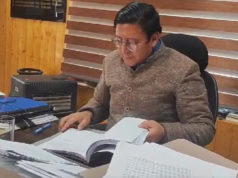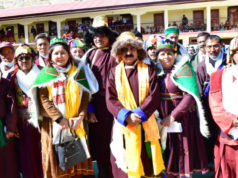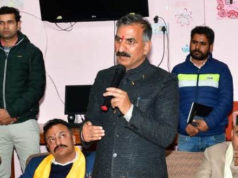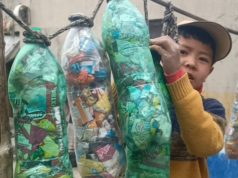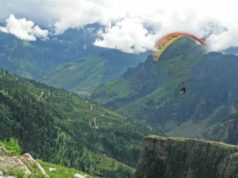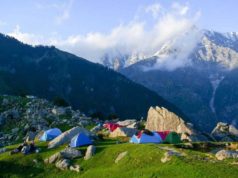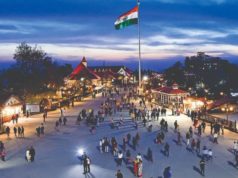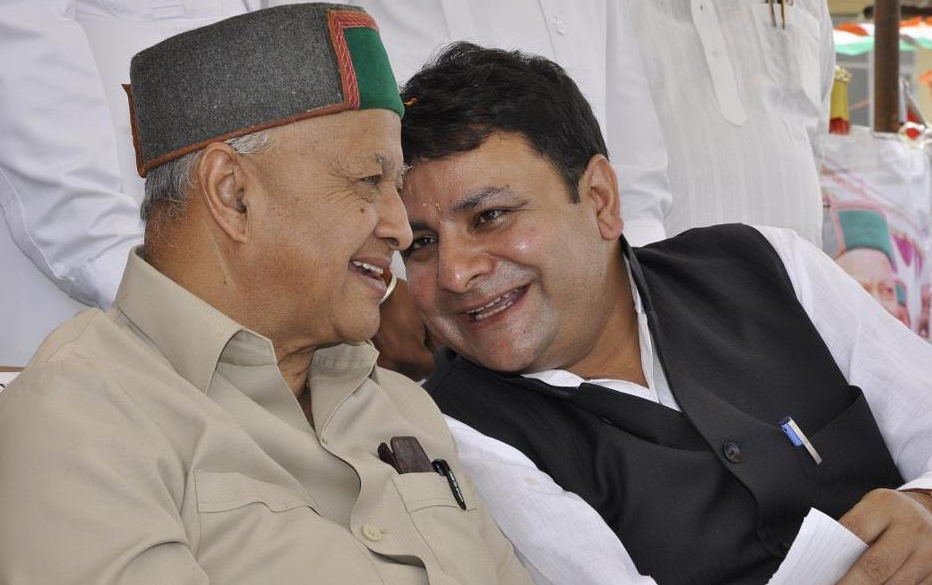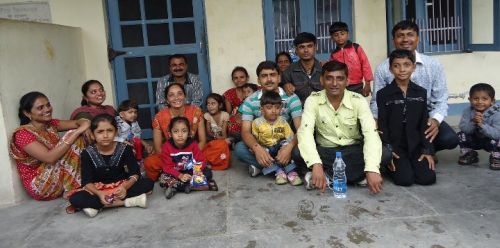(Mohan Lal Relingpa) Surely, God live here, this is no place for men, once Rudyard Kipling remarked about SPITI. In winters, social life restricts to a limited circle and completely revolves around monasteries in Spiti.
The villagers go from house to house drinking chhaang and spending the whole night in festivity, Men and women perform group dancing to the accompaniment of a song relating to a story either from Spitian history or folklore or the glories of lamaistic worship.
The serpentine river Spiti that flows eastward and merged into the Satluj at Khab in Kinnaur. Enroute it is fed by several streams, glaciers, Guindinala, Pari Lungbichu, Pin river and Lingti river. Spiti is known as a cold desert as it received very low rain. Spiti is geologically and Archaeologically a living museum.
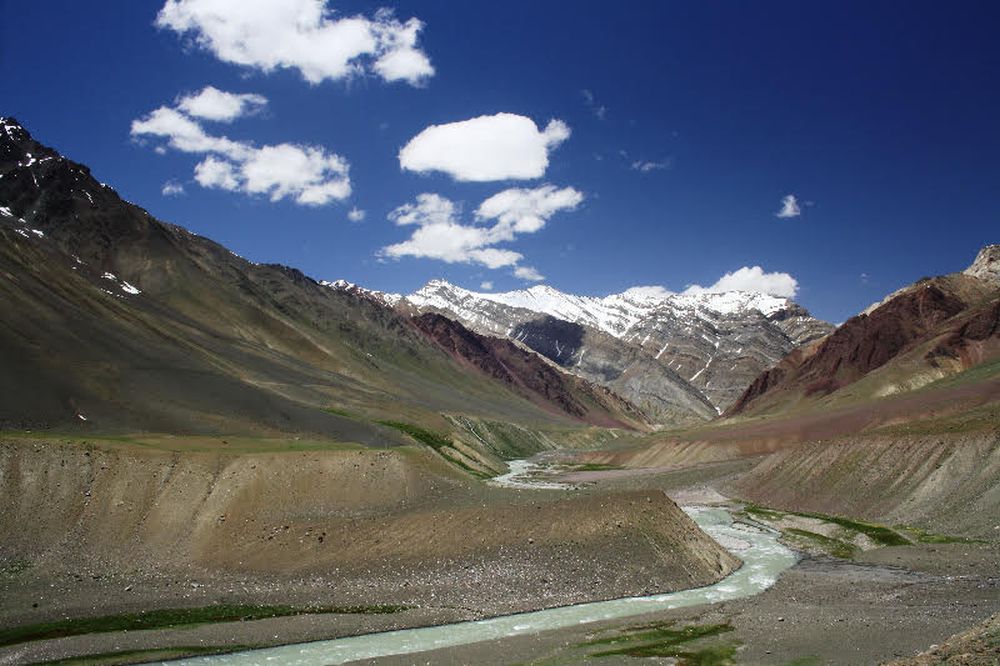
The Spiti valley spellbound the imagination of travellers and lovers of natural beauty. Picturesque Spiti’s landscape added its charm with monasteries, chhorten, mani stones and prayer flags and wheels. Every village has its own mani or stone dyke on which sacred prayer, OM MANE PADME HUM, is carved.
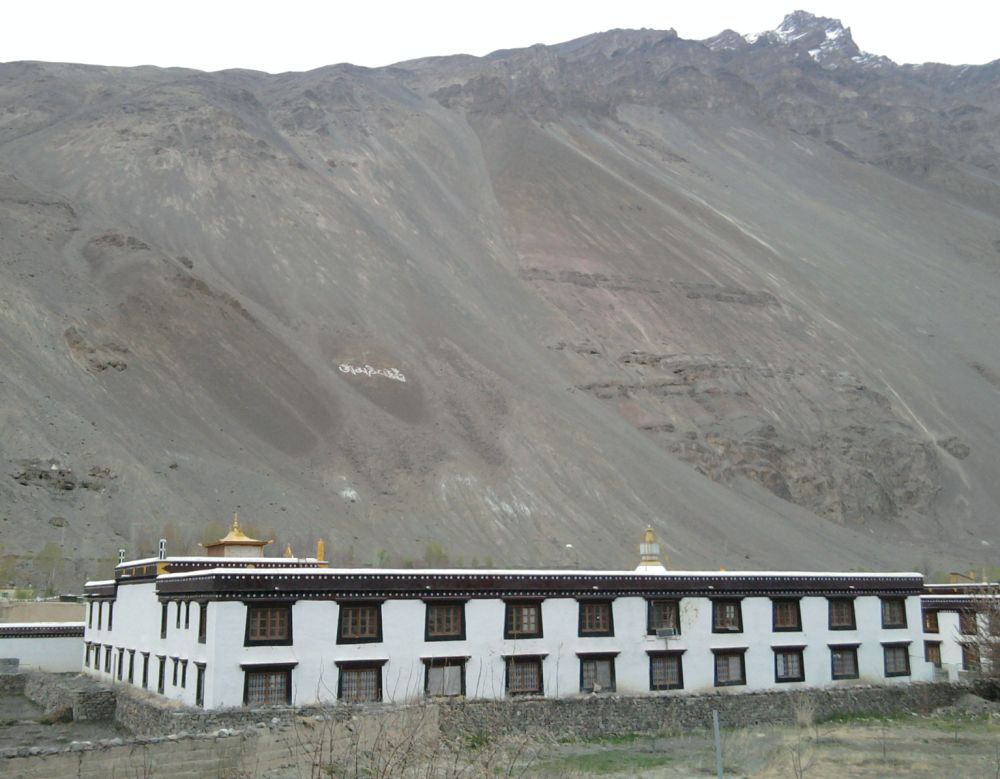
Spiti is a Buddhist dominated area and monks and lamas play a very significant role in society and they also enjoy respect and obedience from the others.
How to reach Spiti Valley?
The Spiti Valley is one of the least populated region in India and is a gateway to the northernmost reaches of the nation. Spiti valley is accessible throughout year via Kinnaur from Shimla route on a difficult 412-kilometre-long road. In summer valley is accessible via Manali through Rohtang Pass and Kunzum Pass. Manali is 201 km away from Kaza.
Valley is accessible by road only as nearest Airports are at Shimla and Kullu.
Tourists from outside India need inner line permits to enter Spiti through Kinnaur.
Due to high elevation, one is likely to feel altitude sickness in Spiti. The visitors should prefer Shimla to Spiti route as it gives them enough time to get acclimatized to the High Altitude.
Places to visit in Spiti Valley
Kaza: Kaza is the sub-divisional headquarters of the remote Spiti Valley. Kaza, situated along the Spiti River at an elevation of 3,650 metres (11,980 ft) above mean sea level, is the largest township and commercial centre of the Spiti valley. The Tangyud Gompa dates to the early 14th century and is built like a fortified castle with massive slanted mud walls and battlements with vertical red ochre and white vertical stripes. Gompa is on the edge of a deep canyon and overlooking the town of Kaza, 4 km from the town.
Chandra Tal Lake: Chandra Taal is a lake in the Spiti. The name of the lake originates from its crescent shape. It is at an altitude of about 4,300 metres in the Himalayas. Chandra Taal is a tourist destination for trekkers and campers. The lake is accessible on foot from Batal as well as from Kunzum Pass from late May to early October. There is also a motor road accessible as far as a parking lot 2 kilometres from the lake. One has to travel on foot for the final 1 km approximately.
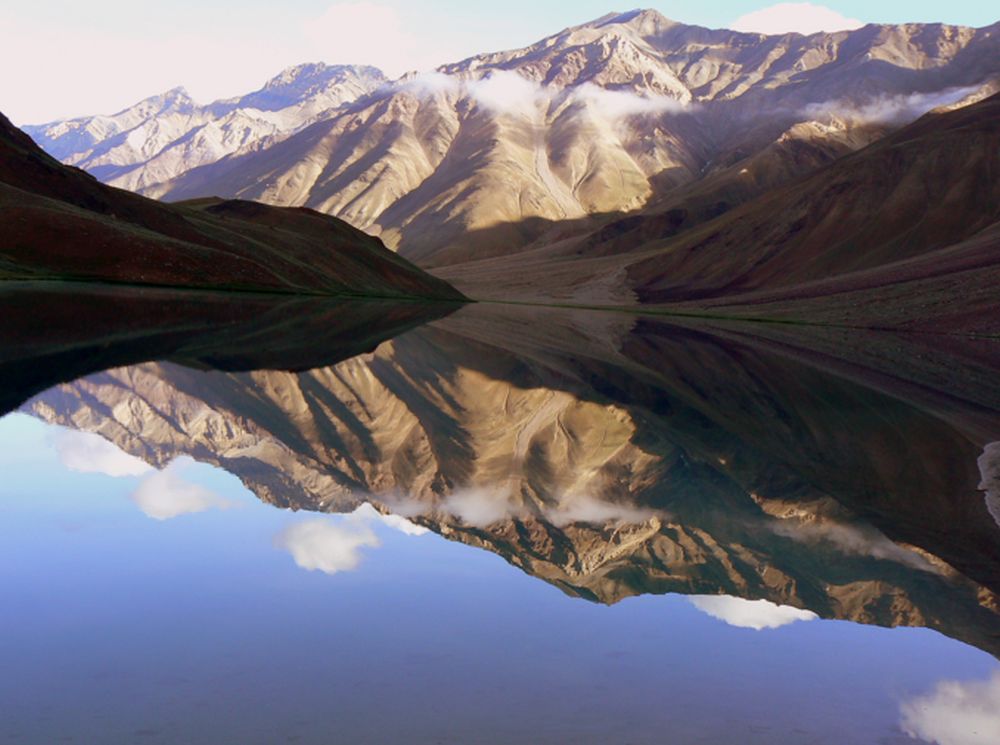
Key Monastery: Key Gompa is a Tibetan Buddhist monastery located on top of a hill at an altitude of 4,166 metres above sea level, close to the Spiti River, in the Spiti Valley. Key Monastery is the biggest monastery of Spiti Valley and a religious training centre for Lamas.
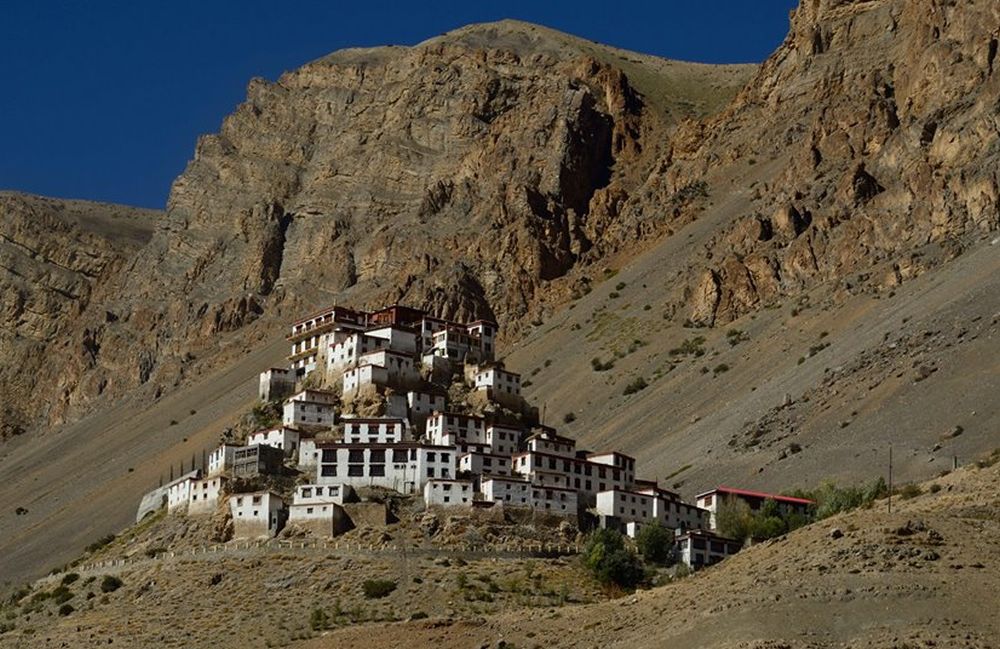
Kye Gompa is said to be founded by Dromton in the 11th century. The walls of the monastery are covered with paintings and murals. It depicts the 14th-century monastic architecture, which developed as the result of Chinese influence.
Kye monastery has a collection of ancient murals and books, including Buddha images. Kye Gompa now belongs to the Gelugpa sect, along with Tabo Monastery and Dhankar Gompa, one of three in Spiti.
Lhalung Monastery: Lhalung Monastery is one of the earliest monasteries in Spiti. Lhalung is also known as the Sarkhang or Golden Temple. The name Lhalun means ‘land of the gods’. The Lhalung Devta is head of all the Devtas of the valley and emerges from the Tangmar mountain beyond the village. This mountain changes colour depending on the moods of the devtas or deities; red showing anger, yellow, happiness.
Tabo Monastery: Tabo Monastery is located in the Tabo village of Spiti Valley. The monastery was built by the Buddhist king Yeshe-Ö in 996 A.D. Tabo is oldest continuously operating Buddhist enclave in both India and the Himalayas.
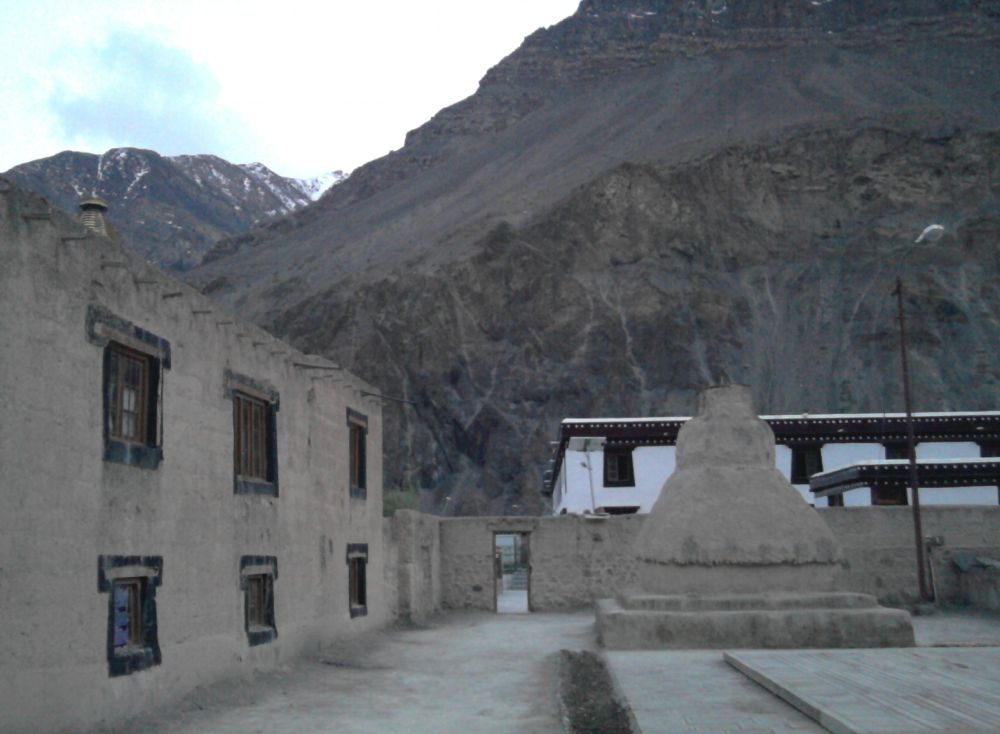
Kunzum Pass: Kunzum Pass is a high mountain pass on the eastern Kunzum Range of the Himalayas some 122 km from Manali. The pass connects the Kullu Valley and Lahaul Valley with the Spiti Valley. It is on the route to Kaza.
Dhankar Gompa: Dhankar Gompa is a Buddhist temple in the Spiti valley. It is situated at an elevation of 3,894 metres in the Spiti Valley above Dhankar Village, between the towns of Kaza and Tabo.
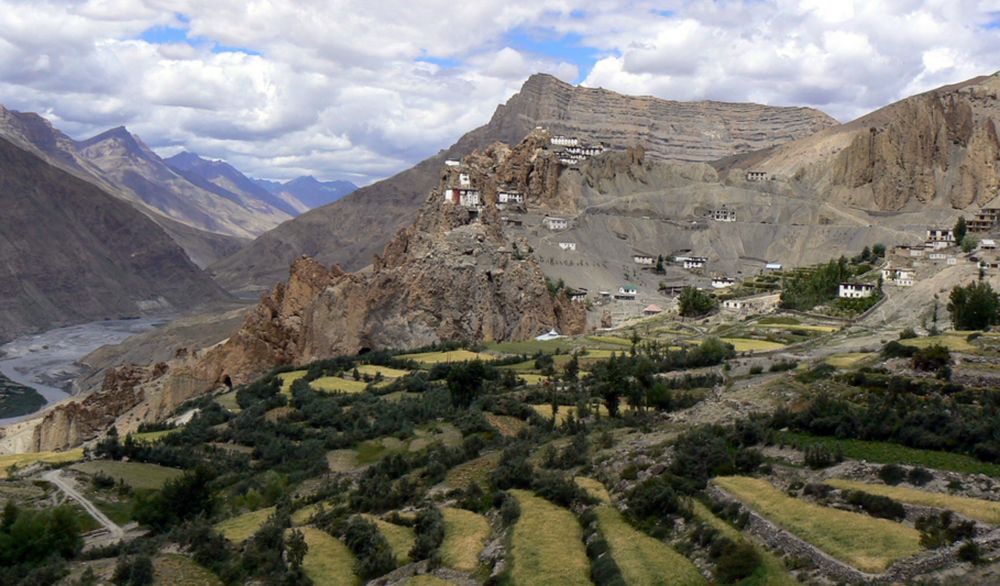
Hikim Village, Komic Village and Langza Village are other must-have visit places in the Spiti valley.


